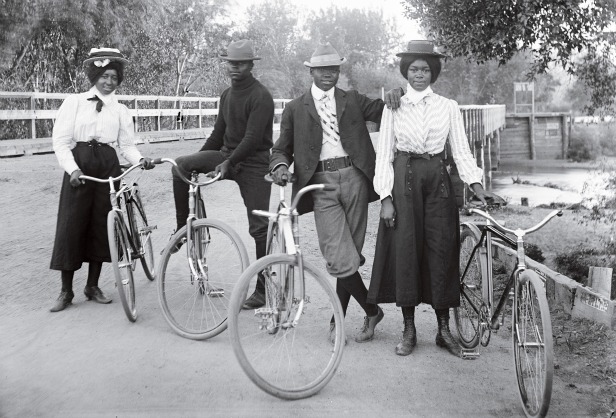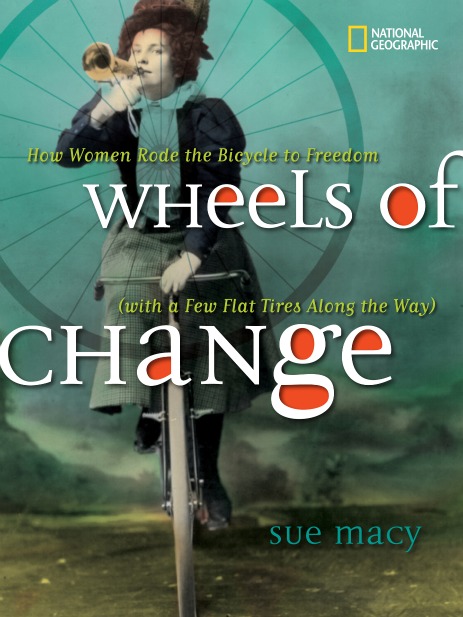 “Let me tell you what I think of bicycling. I think it has done more to emancipate women than anything else in the world. I stand and rejoice every time I see a woman ride by on a wheel.” — Susan B. Anthony, 1896How important was the bicycle in changing the role of women in the world? Consider these words from Munsey’s Magazine in 1896:
“Let me tell you what I think of bicycling. I think it has done more to emancipate women than anything else in the world. I stand and rejoice every time I see a woman ride by on a wheel.” — Susan B. Anthony, 1896How important was the bicycle in changing the role of women in the world? Consider these words from Munsey’s Magazine in 1896:
To men, the bicycle in the beginning was merely a new toy, another machine added to the long list of devices they knew in their work and play.
To women, it was a steed upon which they rode into a new world.
You’ll find that quotation, along with tons of fascinating tidbits about the early history of women and bicycling, in Sue Macy’s new book Wheels of Change: How Women Rode the Bicycle to Freedom (With a Few Flat Tires Along the Way).
It’s a freewheeling and fun tour of the surprisingly powerful effect bicycles had on a women’s position in society in the late 19th and early 20th centuries. Take a look at a few of the images from the book.
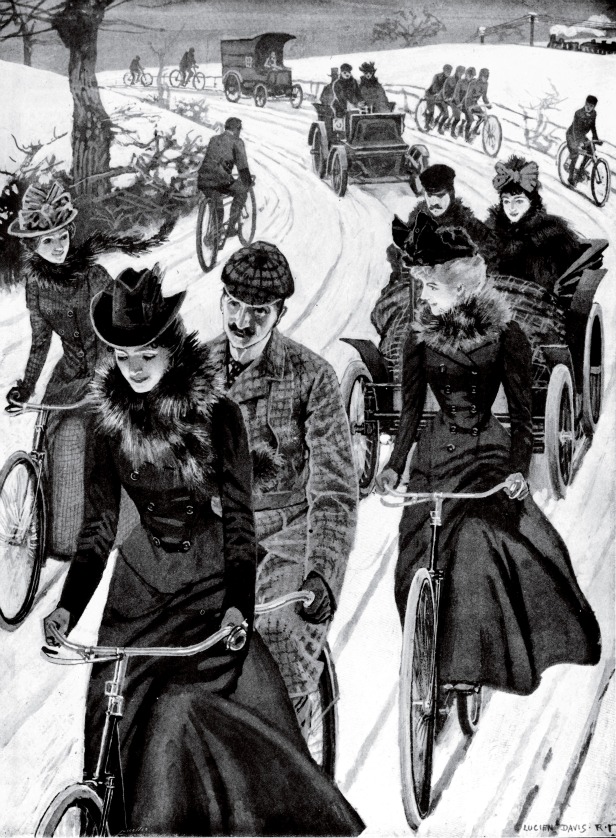 Photo: (c) Science & Society Picture Library/Getty ImagesThe new freedom afforded by the bicycle, being savored by the folks in this 1899 image, caused a lot of hand-wringing. Charlotte Smith, of the Women’s Rescue League, wrote this in 1896: “Bicycling by young women has helped to swell the ranks of reckless girls who finally drift into the standing army of outcast women in the United States.”
Photo: (c) Science & Society Picture Library/Getty ImagesThe new freedom afforded by the bicycle, being savored by the folks in this 1899 image, caused a lot of hand-wringing. Charlotte Smith, of the Women’s Rescue League, wrote this in 1896: “Bicycling by young women has helped to swell the ranks of reckless girls who finally drift into the standing army of outcast women in the United States.”
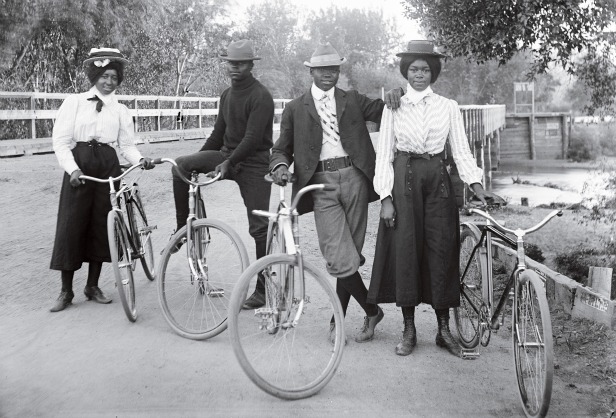 Photo: History Colorado (Lillybridge Collection, Scan #20000294)The bicycle gave young people opportunities to socialize without parental supervision, which freaked out a lot of clergymen and other arbiters of morality. This foursome was having a pleasant excursion in Denver, Colo., circa 1905.
Photo: History Colorado (Lillybridge Collection, Scan #20000294)The bicycle gave young people opportunities to socialize without parental supervision, which freaked out a lot of clergymen and other arbiters of morality. This foursome was having a pleasant excursion in Denver, Colo., circa 1905.
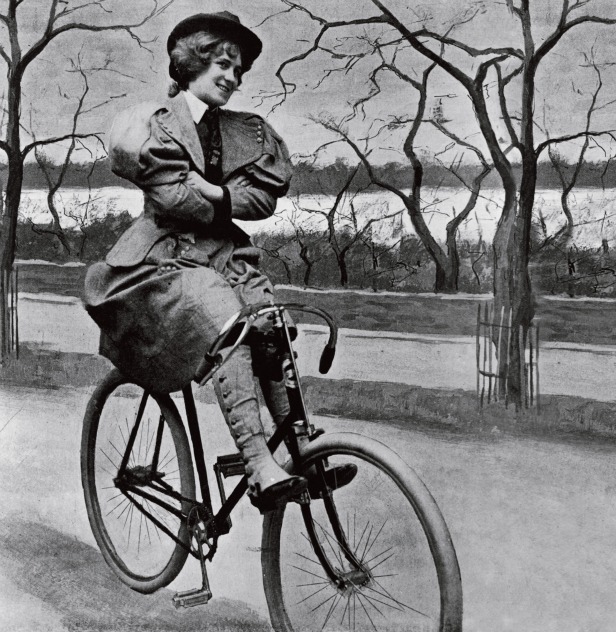 Photo: (c) Hulton Archive/Getty ImagesWomen on bicycles couldn’t be bothered with constraining corsets and huge skirts. This British woman, shown on a bicycle in 1897, is sporting a style known as “rational dress” — which among other things, limited the weight of a woman’s undergarments to seven pounds.
Photo: (c) Hulton Archive/Getty ImagesWomen on bicycles couldn’t be bothered with constraining corsets and huge skirts. This British woman, shown on a bicycle in 1897, is sporting a style known as “rational dress” — which among other things, limited the weight of a woman’s undergarments to seven pounds.
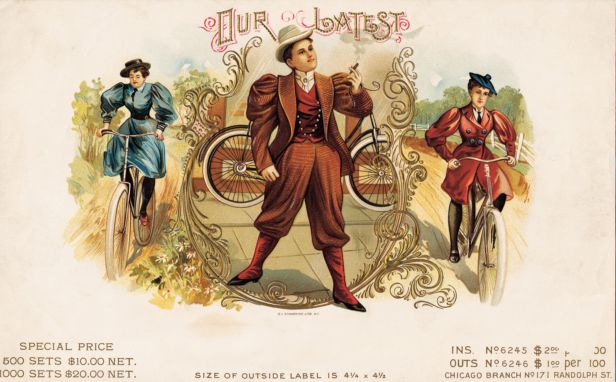 Photo: (c) Norman Batho CollectionFear of the butch: According to Macy, “Many [female cyclists on cigar box labels] were shown as decidedly masculine, with hair cut short or pulled back, and smoking cigars, then an almost exclusively male pursuit. This portrayal reflected the old fears that women in pants would somehow supplement men as breadwinners and decision-makers.”
Photo: (c) Norman Batho CollectionFear of the butch: According to Macy, “Many [female cyclists on cigar box labels] were shown as decidedly masculine, with hair cut short or pulled back, and smoking cigars, then an almost exclusively male pursuit. This portrayal reflected the old fears that women in pants would somehow supplement men as breadwinners and decision-makers.”
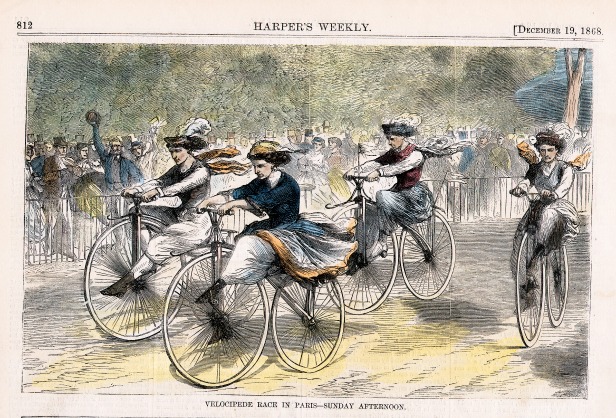 Photo: (c) Beth Emery CollectionHarper’s Weekly, a newspaper that pioneered the use of illustrations alongside text, featured this image of female velocipede racers in Paris in its Dec. 19, 1868, edition. “Success in life depends as much upon a vigorous and healthy body as upon a clear and active mind,” said American racer Elsa von Blumen in 1881.
Photo: (c) Beth Emery CollectionHarper’s Weekly, a newspaper that pioneered the use of illustrations alongside text, featured this image of female velocipede racers in Paris in its Dec. 19, 1868, edition. “Success in life depends as much upon a vigorous and healthy body as upon a clear and active mind,” said American racer Elsa von Blumen in 1881.
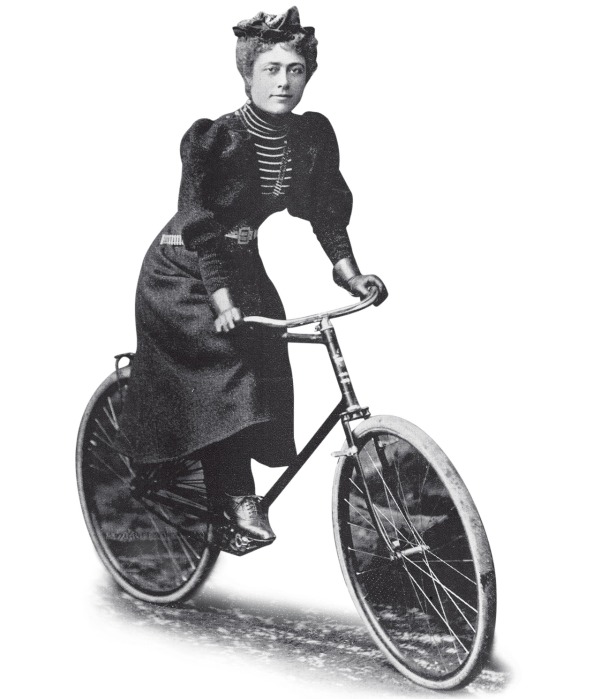 Photo: Colorado Historical Society (Cycling West, Vol. 6 April 15, 1897, Scan #30000557)Dora Rinehart was a Colorado native who stood five-foot-one and weighed in at 140 pounds. She liked to ride centuries — 100 miles at a crack. “In 1896,” writes Macy, “she pedaled 17,196 miles … That included stretches of 10 days in July and 20 days from October 31 through November 19 when she rode a century every day.”
Photo: Colorado Historical Society (Cycling West, Vol. 6 April 15, 1897, Scan #30000557)Dora Rinehart was a Colorado native who stood five-foot-one and weighed in at 140 pounds. She liked to ride centuries — 100 miles at a crack. “In 1896,” writes Macy, “she pedaled 17,196 miles … That included stretches of 10 days in July and 20 days from October 31 through November 19 when she rode a century every day.”

